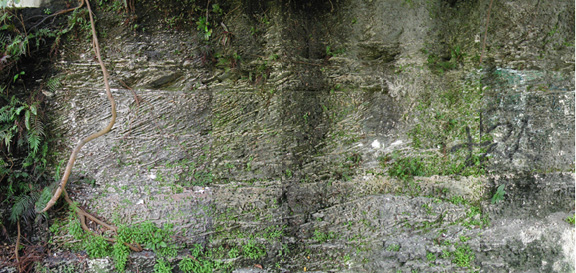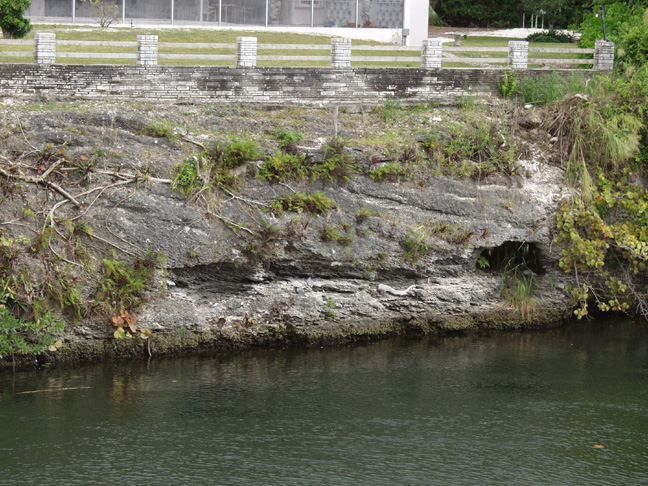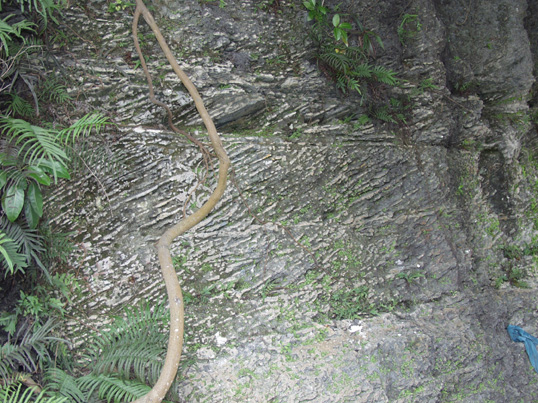Ingraham Park
Active Ooid Shoal Environment
This waterway cut of the Miami Limestone is at the intersection of LeJeune Road and Sunset Drive beneath the bridge, with access from the south side of the waterway. This is an easy outcrop to get to, with ample parking on the circle, and Ingraham Park across the canal.

This locality shows the classic cross-bedding and bioturbated facies in an alternating sequence that is characteristic of the Miami Limestone. This canal cut is approximately 3.5 meters high. According to Halley and Evans (1983), this site lies within the barrier bar, and exhibits periods of higher energy with the cross-bedded facies, and lower energy with bioturbated facies.
Several bounding surfaces, episodes of non-deposition or erosion, were observed at this site, and are clearly visible in the picture below. Burrowed cone structures from the burrowing anemone Phyllactis conguilegia (Shinn, 1968) were also observed. Several mollusk fossils such as Laevicardium laevigatum (Linnaeus, 1758) were found at the site.
In Figure 4 you can see the alternating sequences of cross-bedding and bioturbated beds. Down by the water's edge a micrite layer (mud, or storm layer) separates one section of the burrowed facies from the cross-bedded facies, another sequence of burrowed facies continues above the cross-bedding. Mud layers on pavilion pillars at Mattheson Hammock Park were also observed Figure 7 and Figure 8 .
Convex upward cross beds were observed on the east side of the canal cut.

Solution holes and tide pools |

Fallen rock mass |






